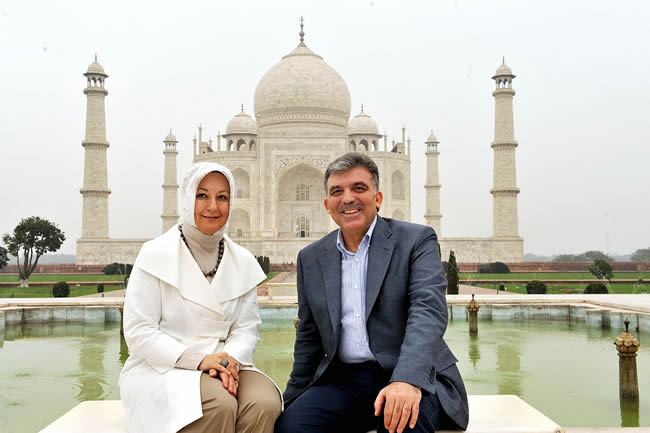India Exclusive

10 February 2010
President Gül explored the Taj Mahal in Agra that was built by the Babur Emperor, Shah Jahan in memory of his wife, Arjumand Banu Begüm.
Agra / Taj mahal
Briefed about the architectural style of the Taj Mahal and about what symbolic meanings this magnificent structure bears, President Gül said admiringly: “Another importance of this mauseloum for us is that it has some traces of the students of Sinan the Architect. No wonder it is on the UNESCO World Heritage List.”
TAJ MAHAL
The Taj Mahal is a mausoleum located in Agra, India built by Babur Emperor Shah Jahan in memory of his favorite wife, Mumtaz Mahal (Arjumand Banu Begum). In 1631, Shah Jahan was griefstricken when his third wife, Mumtaz Mahal, died during the birth of their fourteenth child, Gauhara Begum.
Construction of the Taj Mahal began in 1632, one year after her death and was completed in 1652. The Taj Mahal is considered the finest example of Mughal architecture, a style that combines elements from Persian, Indian, and Turkish-Islamic architectural styles. In 1983, the Taj Mahal was taken on the UNESCO World Heritage List.
Historic Sites in Agra / Taj Mahal





























